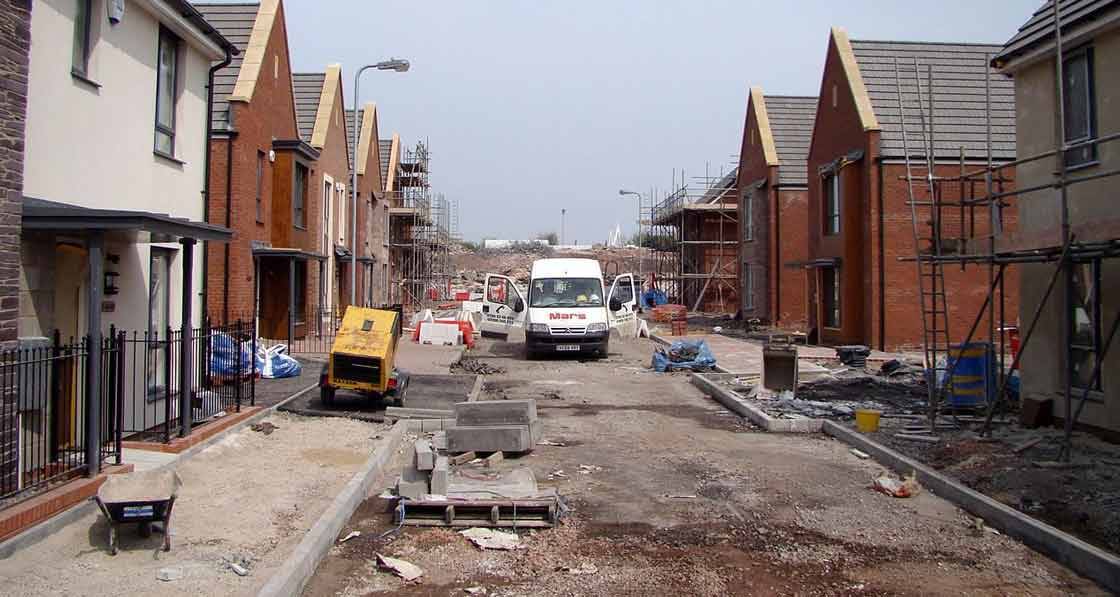
- Blogs
- Posted
Current Irish housing policy is to not build housing
Even the most cursory examination of the figures shows how little housing the state is building, writes architect Mel Reynolds.
If you have built castles in the air, your work need not be lost; that is where they should be. Now put the foundations under them. – Henry David Thoreau
The Department of Public Expenditure and Reform (DPER) recently examined the ‘foundations’ of current housing policy. In a July report the Irish Government Economic & Evaluation Service (IGEES), a section of DPER, questioned if the government’s Rebuilding Ireland Plan is ‘fit for purpose’ and raised some serious concerns.
This year more than €900m will be spent to subsidise private sector social housing rents, homeless services and other rent assistance programmes. The government’s Rebuilding Ireland plan proposes an additional 59,000 household private tenancies will be subsidised over the next four years. At current rates of increase more than €1.7bn will be spent per year on state rent assistance by 2022.
IGEES estimate that the state could spend up to €260,000 on rent support for a two-bedroom house in Fingal but it could build the same house for €130,000. Building is half the cost of renting and the state will eventually own the homes at the end of the term. The report concluded that the state should be building social houses in areas where rents are high, like Co Dublin, rather than resorting to the private sector rental market to solve social housing needs. So, what is the state building?
The answer is very little. Rebuilding Ireland issues a quarterly social housing update of the 930 developments and 14,813 homes in ‘the pipeline’. In the first quarter of 2018, local authorities built 100 homes, and 22 local authorities built none at all. Kerry County Council built more new homes than the entire output for Co Dublin where 15 local authority homes were completed. In 2017 there were 394 homes built by local authorities nationwide.
To put these figures in context, compare public housing supply to demand. Housing Assistance Payment (HAP) is the cornerstone of the Rebuilding Ireland plan and is a form of state rent assistance that allows recipients to work, with supplementary payments going directly to private landlords. More than 50 households enter into rental distress and avail of HAP every day. The HAP programme is to expand by an additional 19,000 new assisted tenancies this year.
Ironically the rapid growth of the programme is heralded by officials as a measure of success of housing policy. But in the first three months of 2018, just two days of HAP demand - 100 homes - were met by the completion of local authority new homes. Activity levels this year have regressed under all headings (see graph).

The figures for 2017 were also bolstered by the completion of the public private partnership (PPP) ‘regeneration’ scheme in Charlemont in Dublin in September 2017, a privately funded and built development on the site of an original local authority scheme, which took 20 years to complete.
This article was originally published in issue 27 of Passive House Plus magazine. Want immediate access to all back issues and exclusive extra content? Click here to subscribe for as little as €10, or click here to receive the next issue free of charge
The original estate had 214 dwellings, and in addition to a new community hall and €5m contribution, under the PPP agreement the developer returned 79 new units to Dublin City Council, a net loss of 135 housing units.
These figures are alarming given that the state controls vast areas of zoned residential development land (see issue 26 of Passive House Plus). Three out of every four vacant sites in Dublin City Centre are controlled by the state, and county councils own enough vacant zoned residential land for more than 48,700 dwellings nationwide. The first three months of 2018 saw Dublin City Council, South Dublin and Dun Laoghaire County Councils build no new homes. Only Fingal was active and built 15 homes, purchasing an additional 16 new-homes off the plans from developers.
Dublin City Council (DCC) owns 112 hectares of zoned residential land with capacity for more than 18,000 dwellings. When interviewed recently DCC’s deputy chief of housing Brendan Kenny confirmed that no new local authority homes would be completed this year. Latest figures highlight continued low levels of state building activity nationwide, and in Dublin in particular. Current housing policy is to not build public housing, at any cost.



